Introduction to Monocarpic Succulents
Table of Contents:

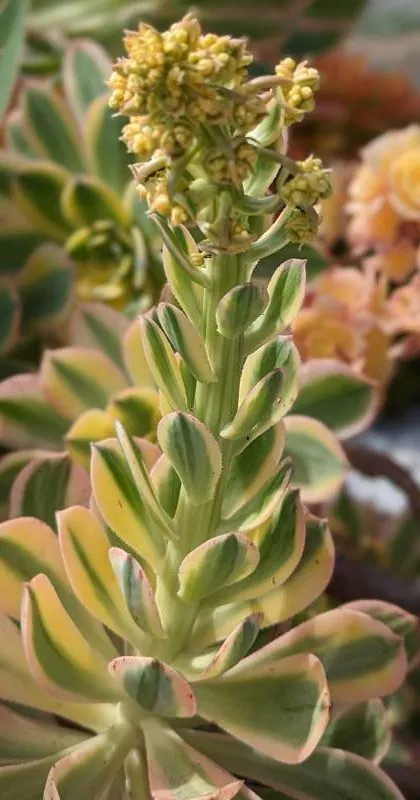
What is a Succulent Death Bloom?
A succulent death bloom is the final flowering event of a monocarpic succulent, which ultimately leads to the plant’s death.
Monocarpic succulents are unique in that they only bloom once in their lifetime, and after this “death bloom,” they die.
This phenomenon can be astonishing and heartbreaking for succulent enthusiasts, as the vibrant and beautiful flower signals the end of the plant’s life.
Do all succulents die after flowering?
Nope! Keep scrolling to learn all about monocarpic succulents which do die after flowering and polycarpic succulents which don’t.
Monocarpic vs Polycarpic Succulents
Monocarpic succulents differ from polycarpic succulents, which can flower multiple times throughout their lives without dying.
Monocarpic succulents are often characterized by their captivating, large flower displays, which are meant to attract pollinators and ensure successful reproduction before the plant dies.
Did you know that the word “monocarpic” comes from the Greek words “mono” (meaning one) and “karpos” (meaning fruit)?

Apical Meristem
The apical meristem is the growth tip of plants, where new cells are produced to spur growth.
In monocarpic plants, the apical meristem experiences major changes once the plant reaches maturity and is ready to flower and set seed.
In some monocarpic succulents, the apical meristem actually stops growing after flowering, leading the plant to die after setting seed.
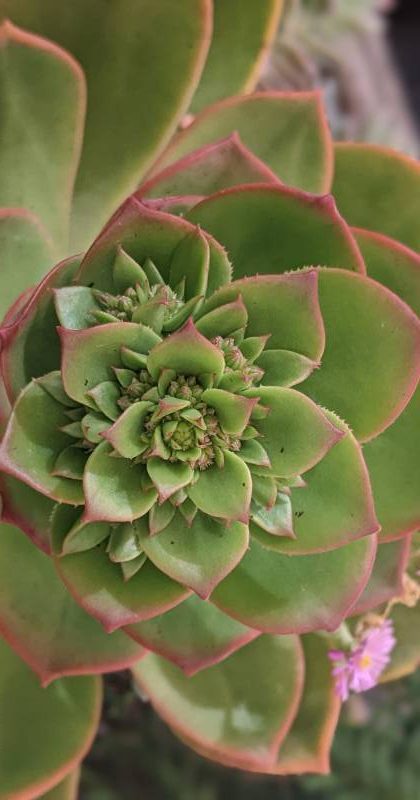
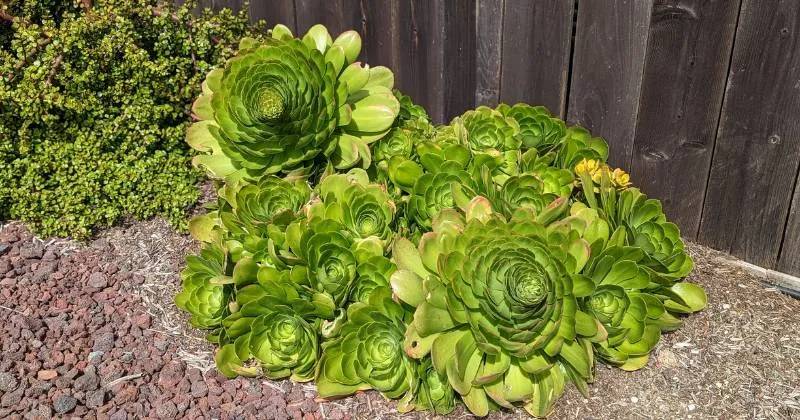
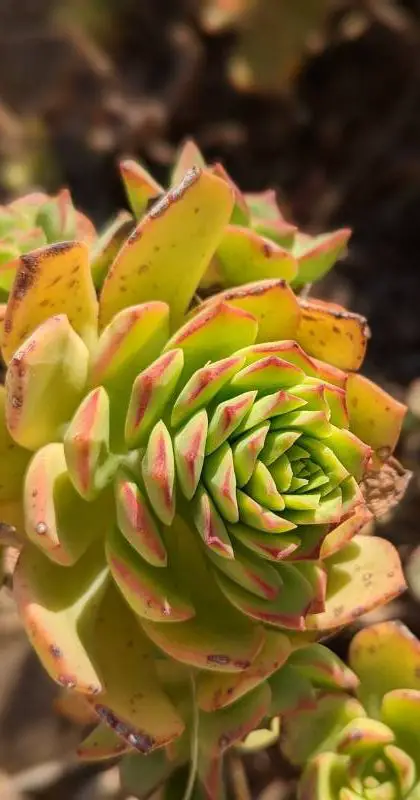
In other monocarpic succulents, the apical meristem transitions from an indeterminate vegetative state – where it continues growing indefinitely – to a determinate state where growth slows and stops at a predetermined point.
When the apical meristem transitions to a reproductive determinate state, it produces a flower stalk and inflorescence instead of more leaves and stems.
This transition of the apical meristem marks the end of the plant’s life as a growing, vegetative organism, and the beginning of its brief reproductive stage before dying.
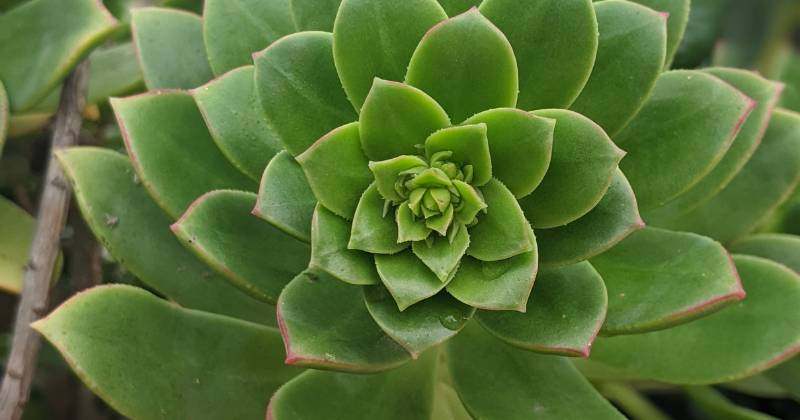
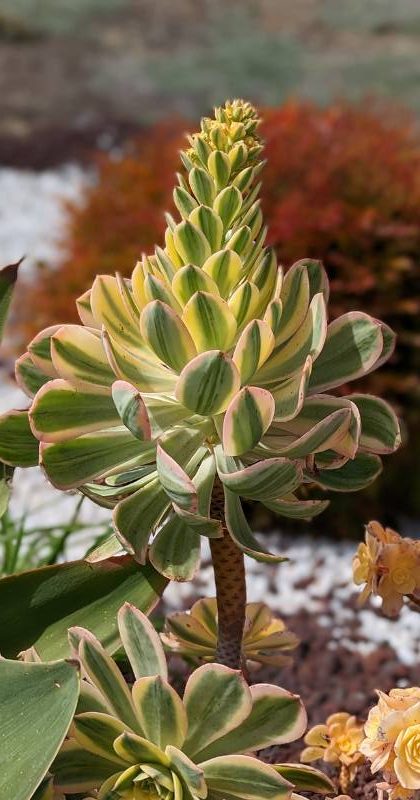
The transformation of the apical meristem is a pivotal event in the lifecycle of monocarpic plants.
Once the switch is flipped in the apical meristem, the succulent marches irreversibly toward reproduction and death.
Understanding how this process is regulated and why some succulents favor a single massive reproduction event over multiple reproductions over a longer lifespan remains an active area of research in botany.

Monocarpic Succulent Species
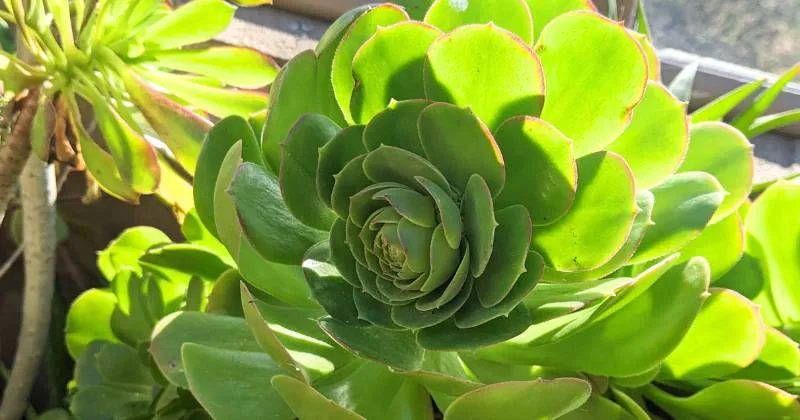
Aeonium Death Bloom
Aeonium is a popular monocarpic succulent genus known for its stunning rosette-shaped leaves and large, colorful flowers.
The Aeonium death bloom occurs when the succulent produces a tall, central flower stalk that eventually leads to the plant’s demise.
But don’t be too sad—Aeoniums often produce offsets or “pups” around their base, which continue to grow even after the parent rosette dies.
Sempervivum Death Bloom
Sempervivum, also known as “Hens and Chicks,” is another beloved monocarpic succulent.
When the time comes for a Sempervivum death bloom, the succulent produces a tall flower stalk with clusters of small, star-shaped flowers.
After blooming, the Sempervivum succulent dies, but it usually leaves behind numerous “chicks” around the base to carry on its legacy. If the mother plant hasn’t produced any babies, then sadly, it is time to toss it and move on.
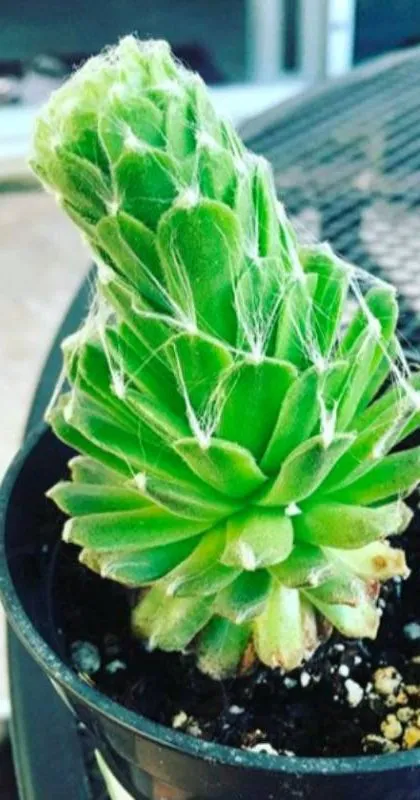
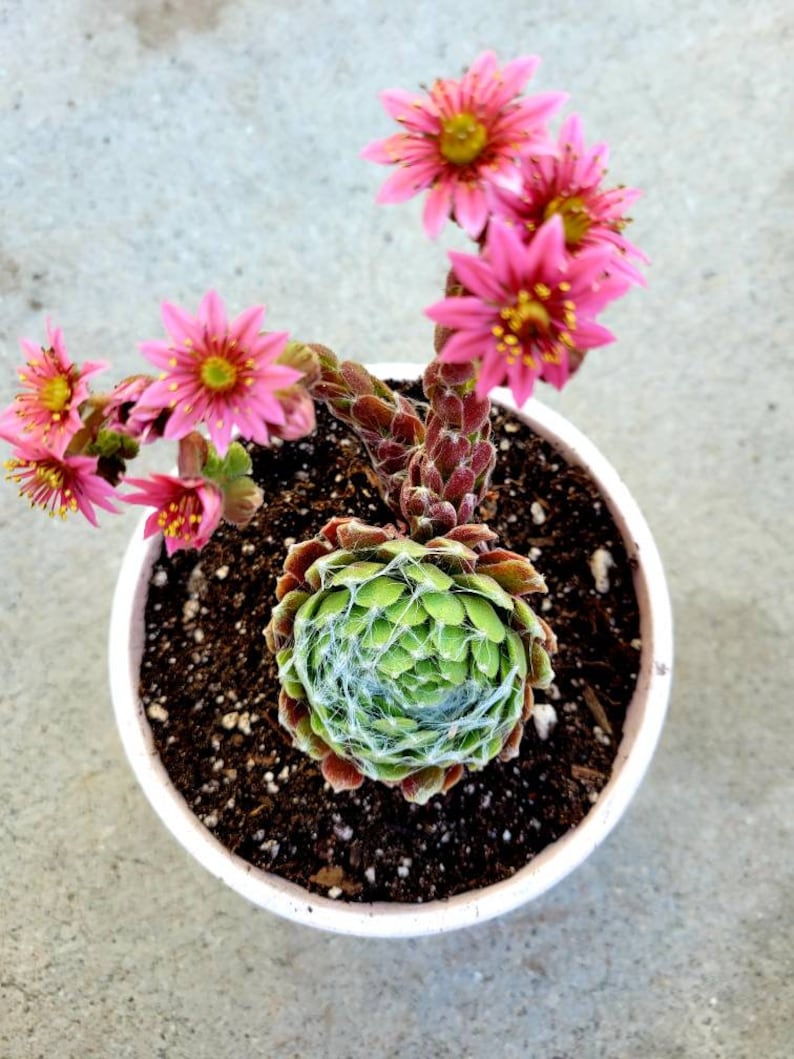
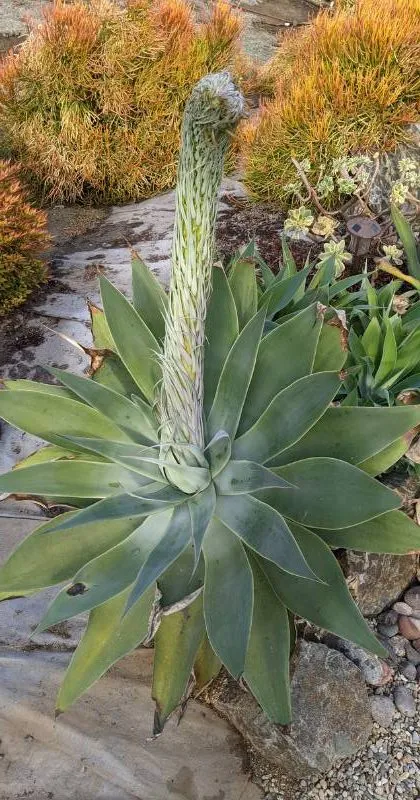
Agave Death Bloom
The Agave succulent is a dramatic example of a monocarpic succulent.
After spending years accumulating nutrients, the Agave undergoes an enormous burst of growth producing a gigantic flower stalk up to 30 feet tall.
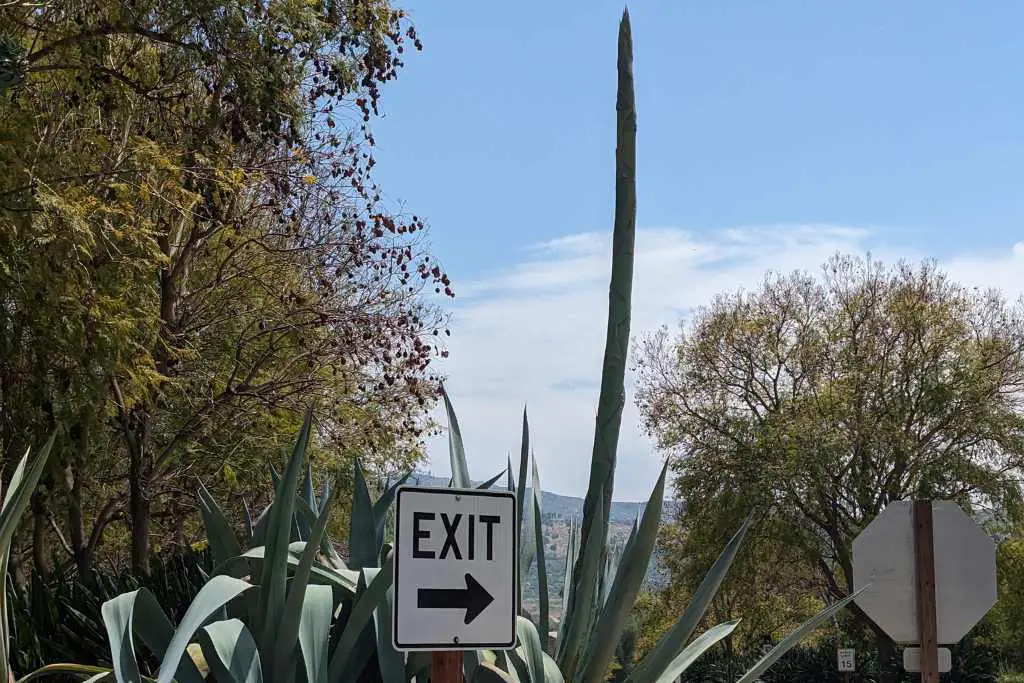
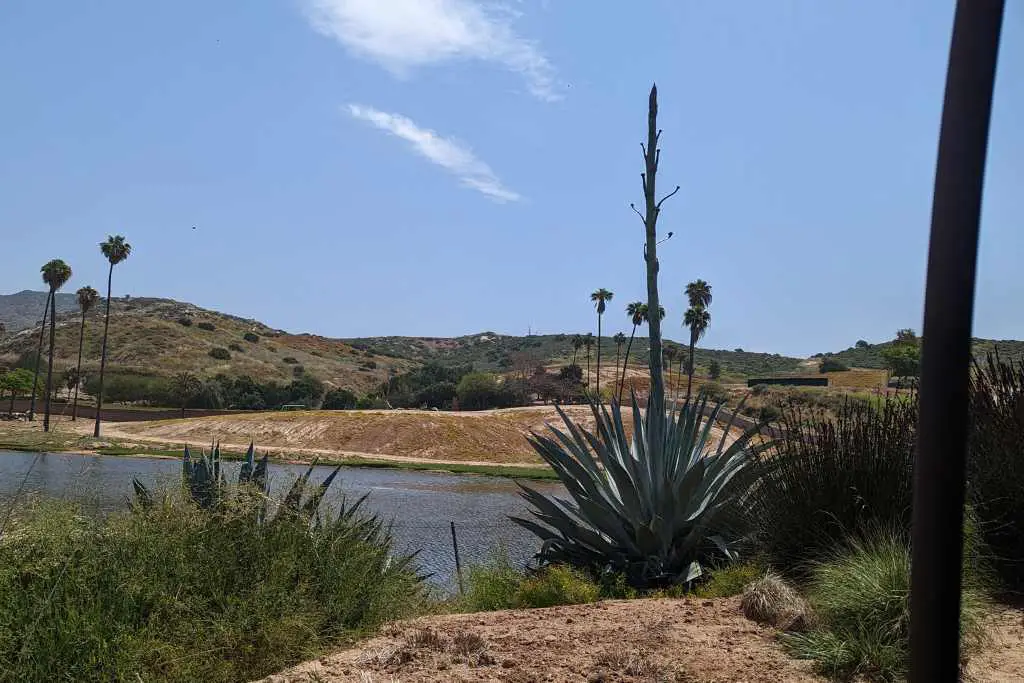
The death bloom begins when its apical meristem transitions to produce the flower stalk and inflorescence.
Over months, the agave channels its remaining energy resources into the towering flower spike.
You’ll notice that the leaves start to wither and look worse and worse once the monocarpic death bloom starts to form.
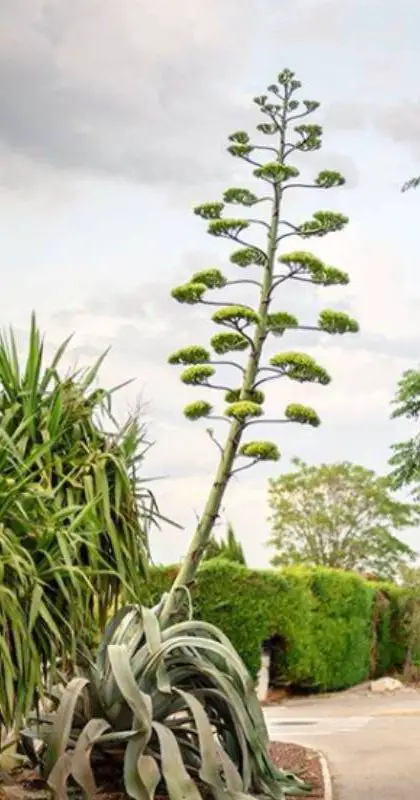
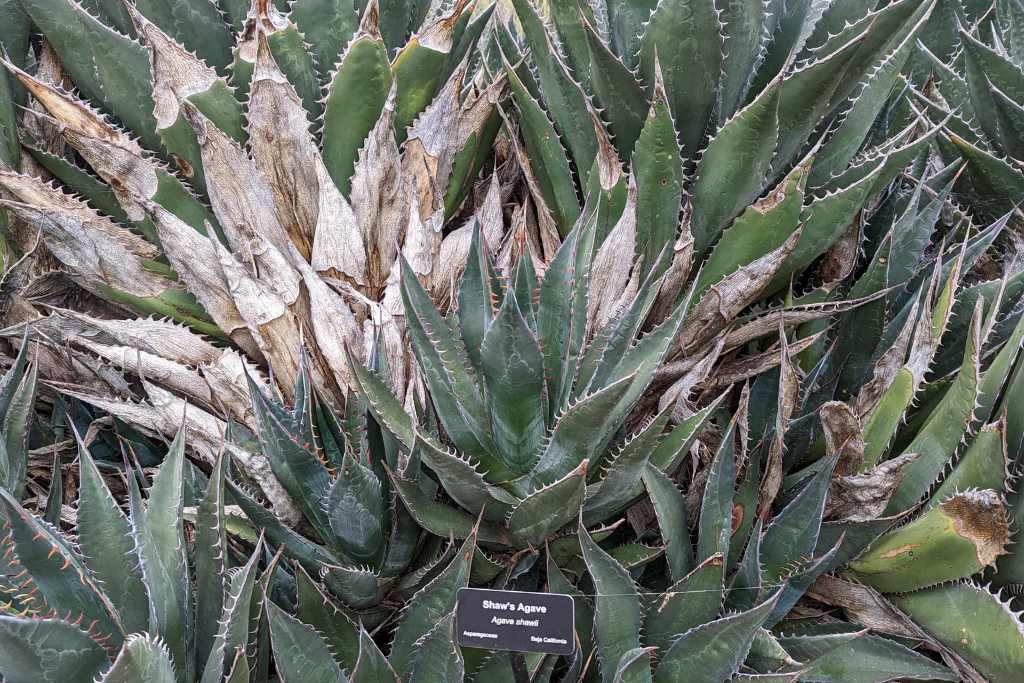
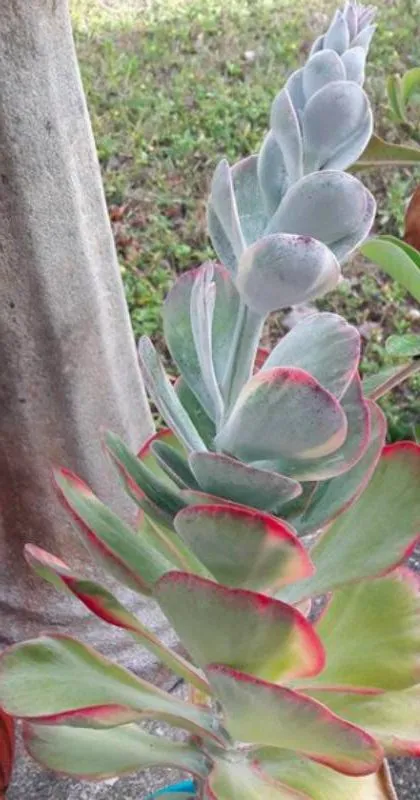
Flapjack Succulent Death Bloom
The Flapjack succulent (Kalanchoe luciae) is an eye-catching monocarpic succulent with large, flat, paddle-shaped leaves.
When it’s time for a Flapjack succulent death bloom, the succulent produces a really tall flower stalk with clusters of tubular flowers.
Once the flowers fade, the main plant dies, but it may leave behind tiny pups at the very base or seeds to continue its lineage.
Do Echeveria die after flowering?*
Although Echeveria species are not monocarpic as a whole, some species do experience a death bloom or terminal inflorescence. Flowering weakens Echeveria temporarily but does not kill the parent rosette in most cases, allowing it to bounce back or propagate new growth over time.
These rosette-forming succulents will almost always produce tall, arching flower stalks that emerge from any point around the stem of the rosette.
IF the flower stalk is growing out of the very very center of an Echeveria and no new leaves are growing, then you’re likely to experience a death bloom with your Echeveria.
The apical meristem in the center of the rosette is damaged and results in the succulent’s death after flowering.
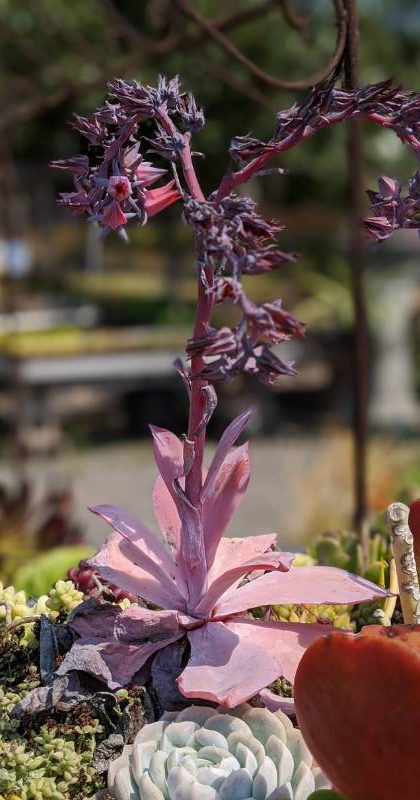
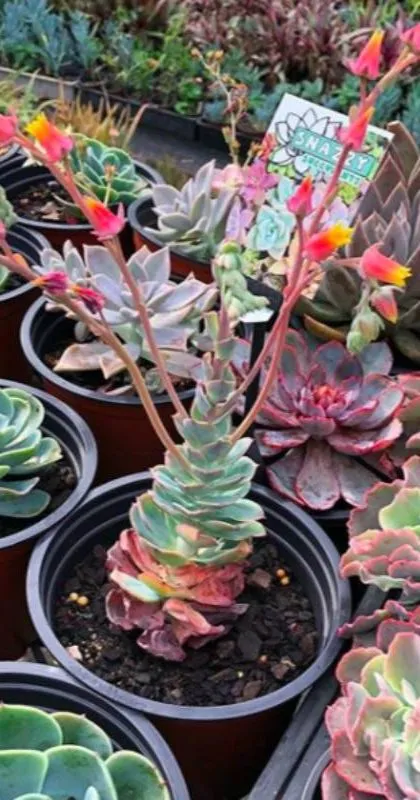
*Echeveria are not monocarpic, however two common species that may produce a death bloom/terminal inflorescence are Echeveria ‘Afterglow’ and Echeveria ‘Blue Sky’.
These two species can also produce normal bloom stalks from points in between lower leaves and continue growing after those flowers have finished blooming.
Why Do Monocarpic Succulents Die After Flowering?
The Role of Death Bloom in Reproduction
The primary reason do succulents die after flowering is to ensure successful reproduction.
By investing all their energy into a single, spectacular bloom, monocarpic succulents increase their chances of attracting pollinators and producing viable seeds.
This strategy may seem counterintuitive, but it’s actually quite effective in ensuring the species’ survival.
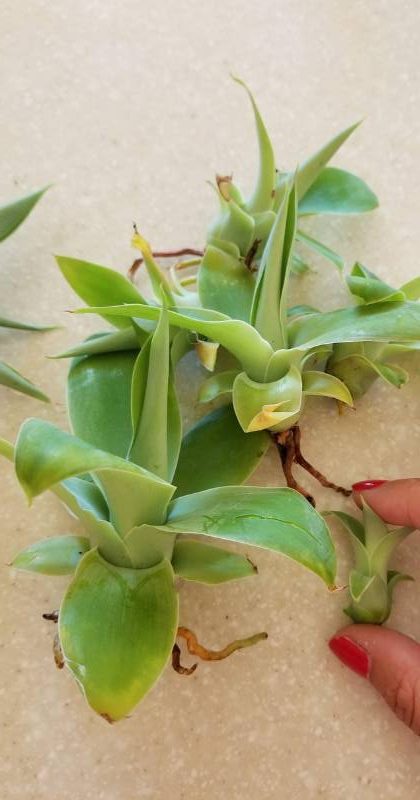
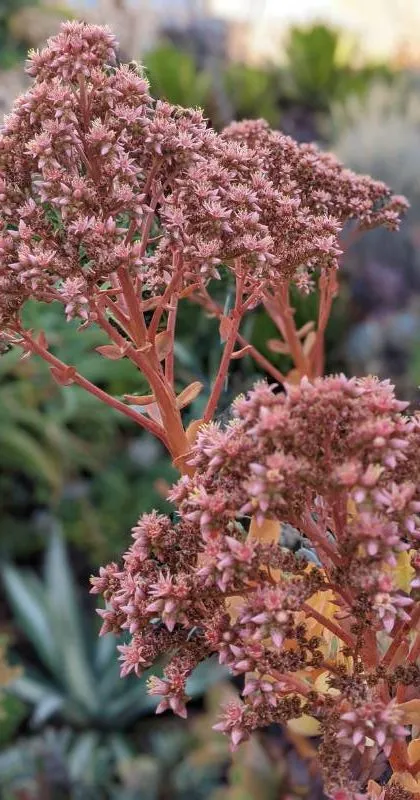
Death Bloom as a Survival Strategy
Another reason for the death bloom phenomenon in monocarpic succulents is that it serves as a survival strategy for the plant’s offspring.
By dying after flowering, the mother plant decomposes and provides nutrients to the surrounding soil, giving its offspring a better chance to grow and thrive.
This self-sacrificing behavior is a fascinating example of nature’s complex strategies for survival.
Caring for Monocarpic Succulents
Recognizing the Signs of a Death Bloom
Knowing how to identify the early signs of a death bloom on succulent plants is crucial for succulent enthusiasts.
Look for a tall, flower stalk emerging from the center of the rosette, which is typically much larger and more dramatic than the flowers of polycarpic succulents.
As the succulent flower stalk grows and the flowers begin to form, it becomes increasingly clear that the plant is entering its final stage of life.
When a death bloom happens, you’ll notice the succulent elongating and looking kind of shabby as the bloom takes all of the energy from the leaves. Once all of that energy is spent, the succulent dies.

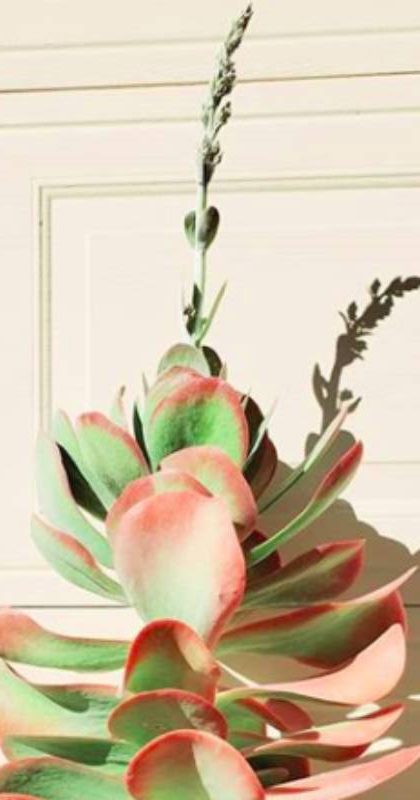
How to Prolong the Life of Monocarpic Succulents
While it’s impossible to prevent a monocarpic succulent from dying after its death bloom, there are steps you can take to possibly prolong its life and ensure the survival of its offspring. It’s worth a shot if you want your succulent to survive and aren’t super interested in seeing the dramatic death bloom.
Propagation Techniques
One of the best ways to preserve the legacy of a monocarpic succulent is through propagation.
Many monocarpic succulents produce offsets or “pups” around their base, which can be carefully removed and replanted to create new mother plants.
Additionally, some monocarpic succulents produce seeds that can be harvested and sown to grow new plants. This way, you’ll still be able to see the magnificent terminal inflorescence.
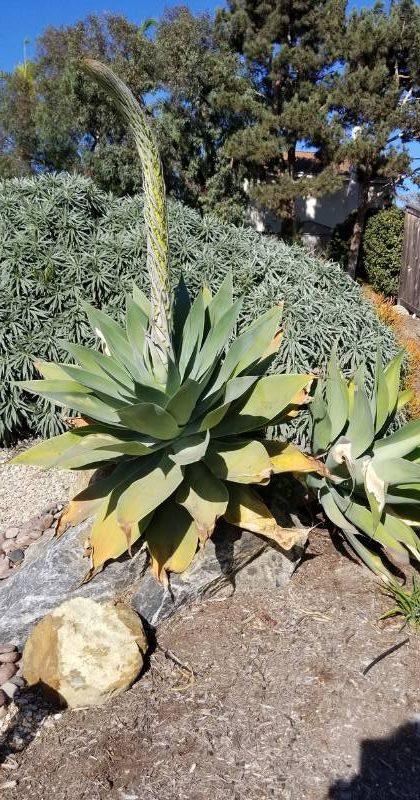
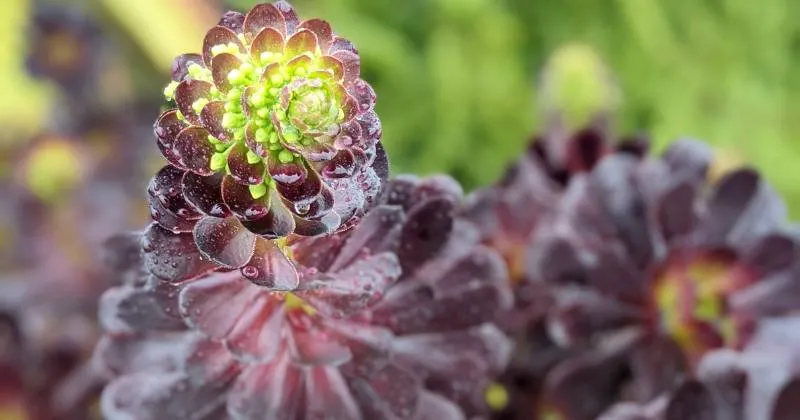
Bulbils
Bulbils are tiny plantlets that some monocarpic succulents produce as a method of asexual reproduction. These small growths can form along the stem or leaves and drop off to root and form new plants. Bulbils serve as a backup reproduction strategy for the plant if it is unable to flower and set seed due to environmental conditions.
These bulbils provide a genetic clone of the mother plant and can be detached, grown roots, and planted to propagate identical copies of the parent plant. Ultimately, bulbils allow these succulents to ensure their survival and pass on their genes before self-terminating after flowering.
Propagation through Pinching Out
Many monocarpic succulents can be propagated using a technique called ‘pinching out.’ This method works particularly well with Aeonium and Echeveria. Currently, it is summer in San Diego and Aeonium are dormant so once temps cool down and my Aeonium start to grow I’ll demonstrate this and post some pictures.
By pinching out the parent rosette’s apical meristem or growing tip, multiple secondary branches can be encouraged to develop into cutting-ready offsets earlier than normal.
Pinching involves using clean scissors or a sharp Exacto knife to remove just the uppermost portion of an actively growing stem. This destroys the dominant growth point and triggers lower buds to branch out. Once these pinched side stems have enlarged, they can be removed as cuttings once their own roots form.
By pinching a few of my larger Aeonium during their period of active growth, I’ll have plenty of healthy offsets in early spring that will be able to thrive separately from the parent rosette once their roots are established. Only pinching from large, healthy plants ensures healthy propagations.
Monocarpic succulents are a unique and intriguing group of plants that captivate us with their beautiful, yet fleeting, death blooms.
By understanding the lifecycle of these succulents and learning how to care for them properly, we can appreciate their fascinating survival strategies and enjoy their stunning beauty.
Remember, although it’s sad to see a monocarpic succulent die after its death bloom, the cycle of life continues through its offspring, ensuring the survival of these remarkable plants.
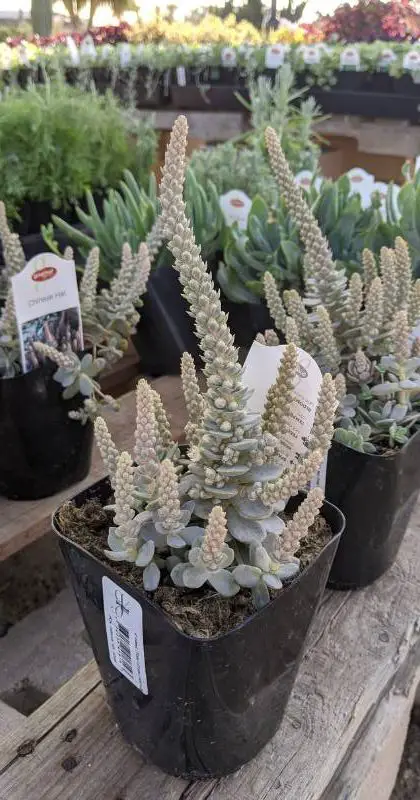
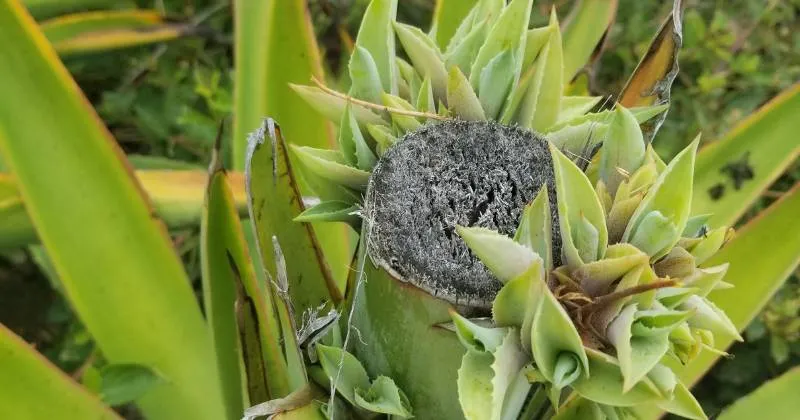
FAQs
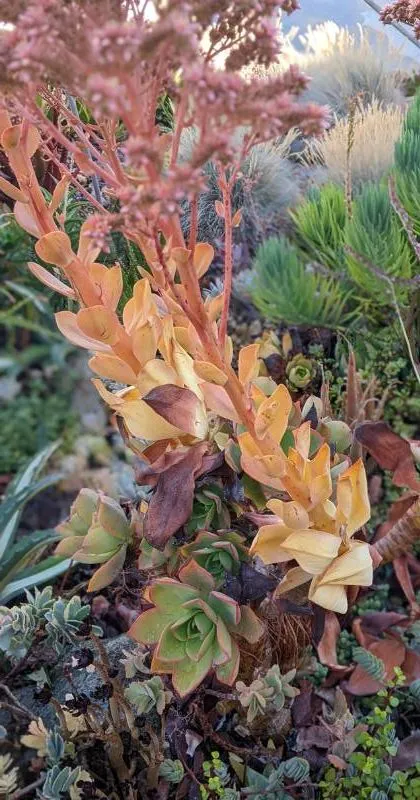
What is a succulent death bloom?
A succulent death bloom is the final flowering event of a monocarpic succulent, which ultimately leads to the plant’s death.
Are all succulents monocarpic?
No, not all succulents are monocarpic. Some are polycarpic, meaning they can bloom multiple times throughout their lives without dying.
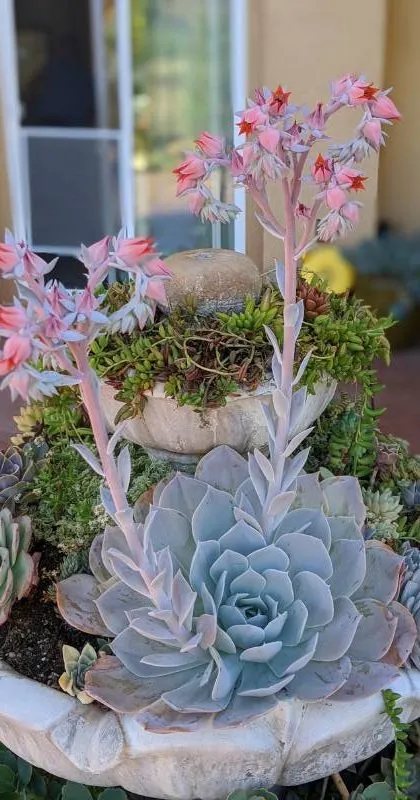
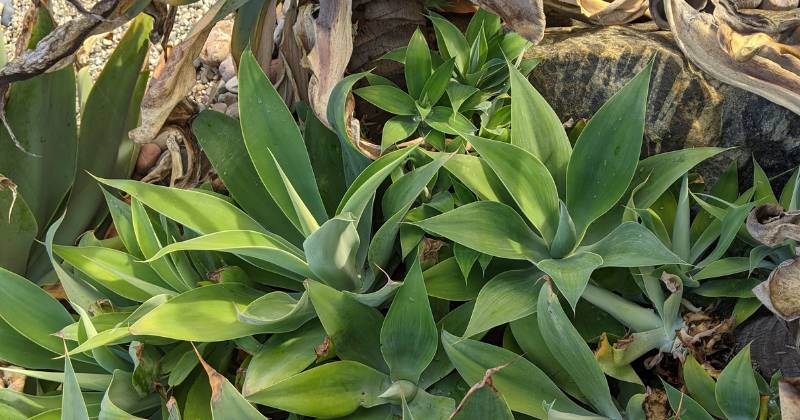
Can I prevent a monocarpic succulent from dying after it blooms?
Unfortunately, you cannot prevent a monocarpic succulent from dying after it blooms. However, you can propagate the plant before its death bloom to preserve its legacy.
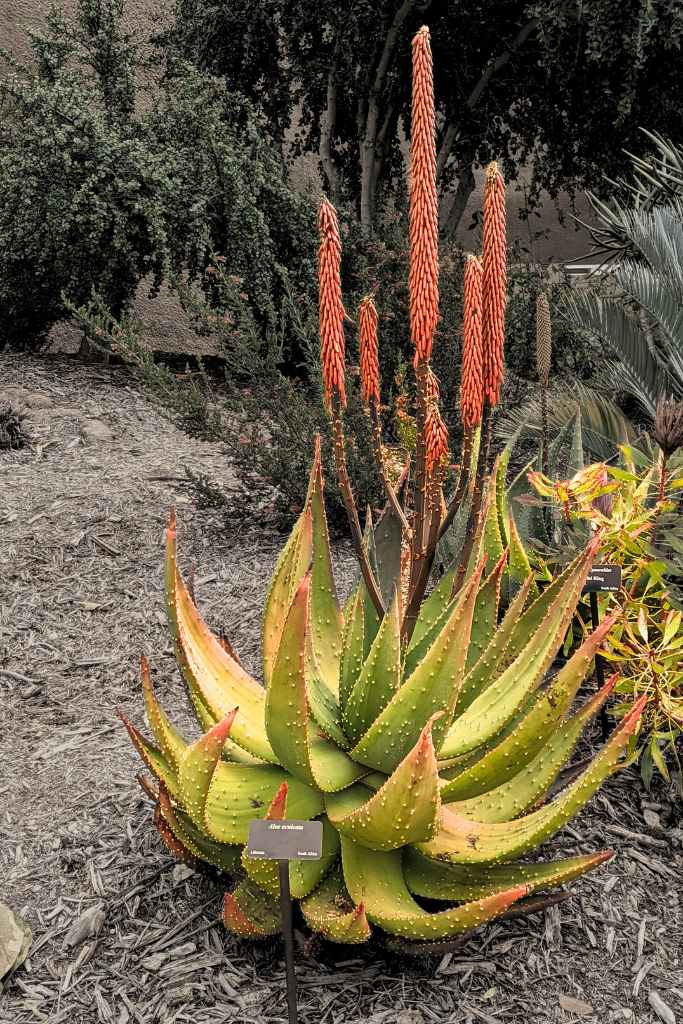
Do all Echeveria species die after flowering?
Not all Echeveria species are die after flowering. Some die after flowering, while others can bloom multiple times without dying. It’s crucial to research individual species to determine their lifecycle.
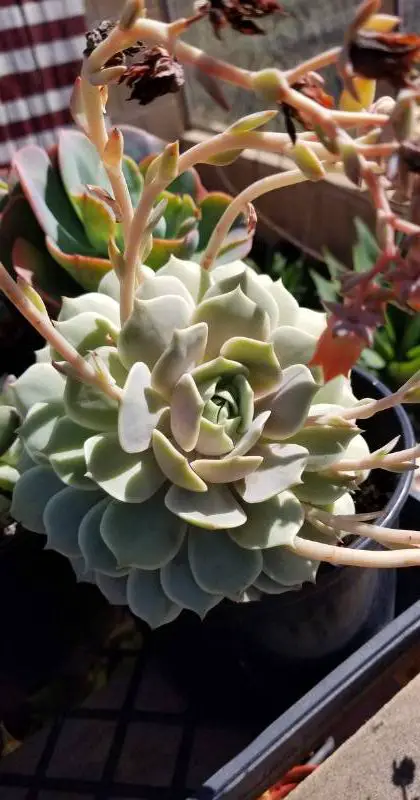
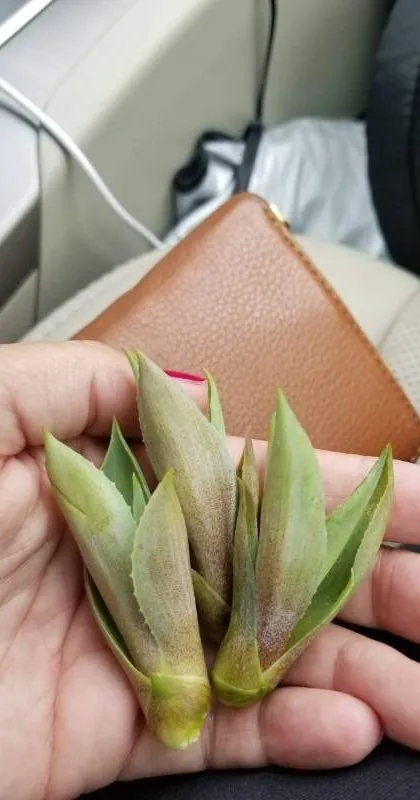
Will my monocarpic succulent leave behind offspring after it dies?
Many monocarpic succulents produce offsets or “pups” around their base, which can be propagated and grown into new plants.
Some also produce seeds that can be harvested and sown to grow new plants. This is a much more difficult and time consuming method.
Are Sempervivums monocarpic?
Yes, Sempervivums are one of the genera where all of the species are monocarpic and will die after flowering. The mother plant will produce lots of pups before dying though which are easy to propagate.
What does it mean when a succulent flowers?
In most cases, flowering is a sign that the succulent is healthy, mature, and doing well in its current conditions. So, great job at plant parenting!! It’s a natural part of the plant’s growth and development. An impressive bloom is a beautiful reward for proper succulent care.
When a succulent plant flowers, it usually indicates the following:
- Maturity – The plant is mature enough to produce flowers. Many succulents don’t flower until they reach a certain age.
- Good health – Flowering is often a sign that the plant is getting proper sunlight, water, nutrients, etc. If a succulent is stressed, it likely won’t have the resources to produce flowers.
- Season change – Some succulents flower based on seasonal changes, like increasing light and warmth in spring/summer. The hours of sunlight or temperatures triggering the hormonal changes needed for flowering.
- Propagation – The plant is preparing to reproduce. Flowers lead to pollination and the eventual production of seeds. The plant flowers to propagate itself.
- End of lifespan if it is a monocarpic succulent.
Are the flowers on my succulent supposed to die?
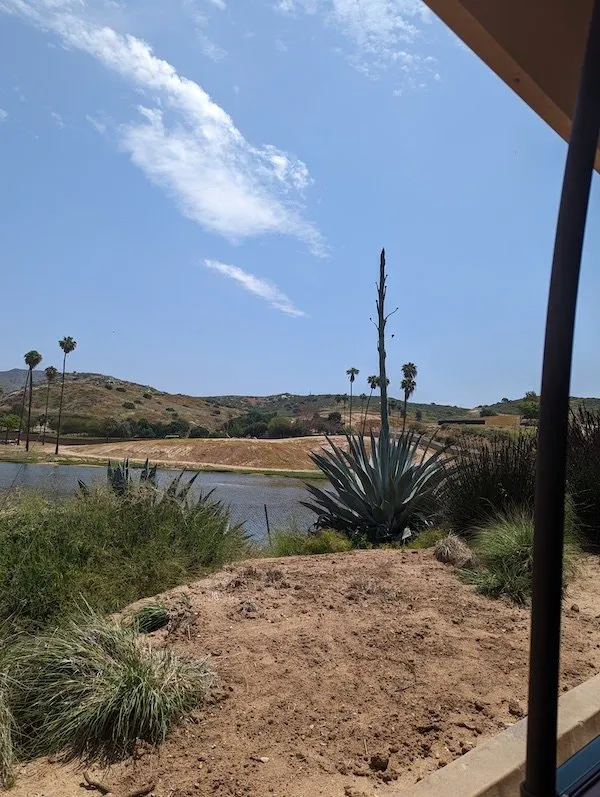
Yes, it’s normal for the flowers on succulents to die off after blooming.
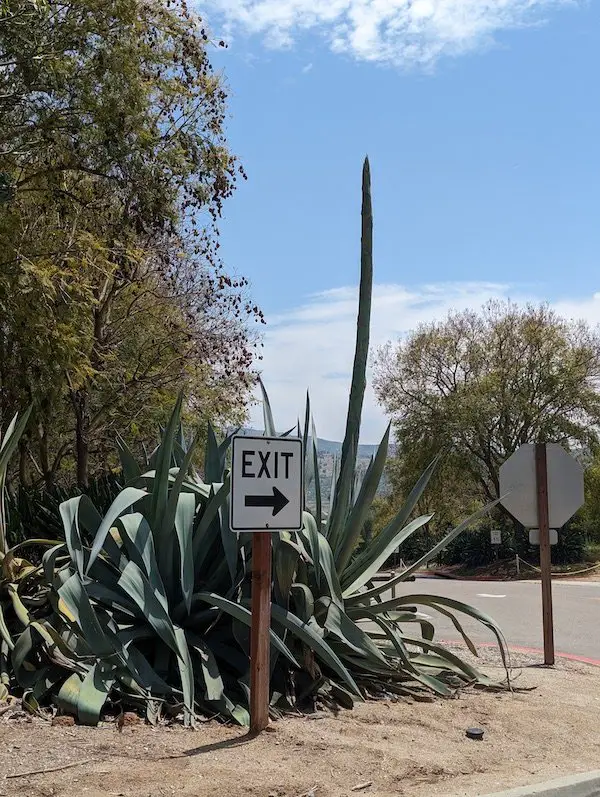
Here are some more details:
- Succulent flowers are meant to be temporary. They bloom to attract pollinators and produce seeds, but each individual flower only lasts about 1-2 weeks.
- Once the flowers fade and die, it triggers the plant to put energy into developing seeds instead of sustaining the flowers. This is part of the natural life cycle.
- Dead flowers can simply be plucked off to keep the plant looking tidy. Just be gentle and avoid damaging the main plant.
- Some succulents like Echeveria may bloom quite prolifically in cycles over a period of weeks or months. But again each flower itself will die off.
- If the whole flower stalk starts drying out and dying back, you can trim it off closer to the main rosette.
- While flowers dying is normal, if leaves or main stems start dying too it could mean there’s another issue like overwatering. But the flowers naturally have a short lifespan.
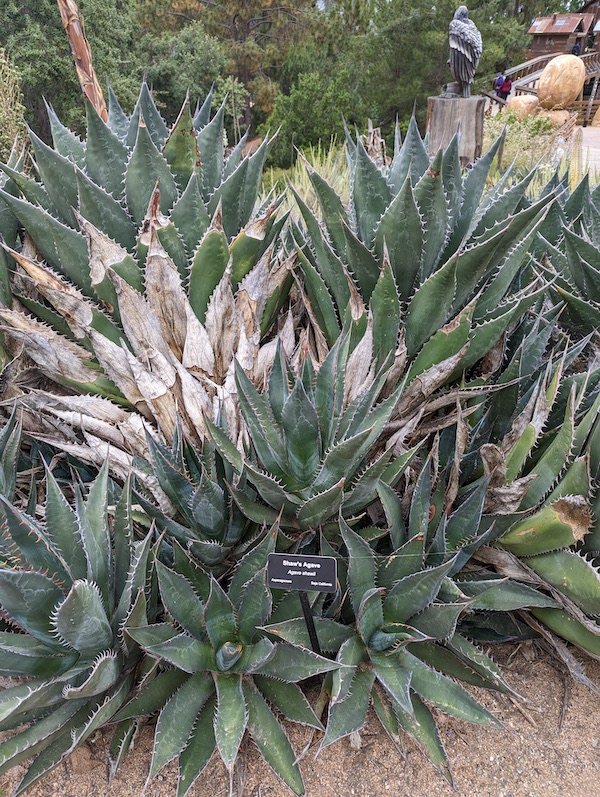
So in short – enjoy the blooms when your succulent flowers, but expect them to wither away on their own as the succulent focuses energy elsewhere. It’s just part of the succulent’s natural growth habit.
More examples of death blooms from Reddit:
What is This?
byu/rarestereocats insucculents


